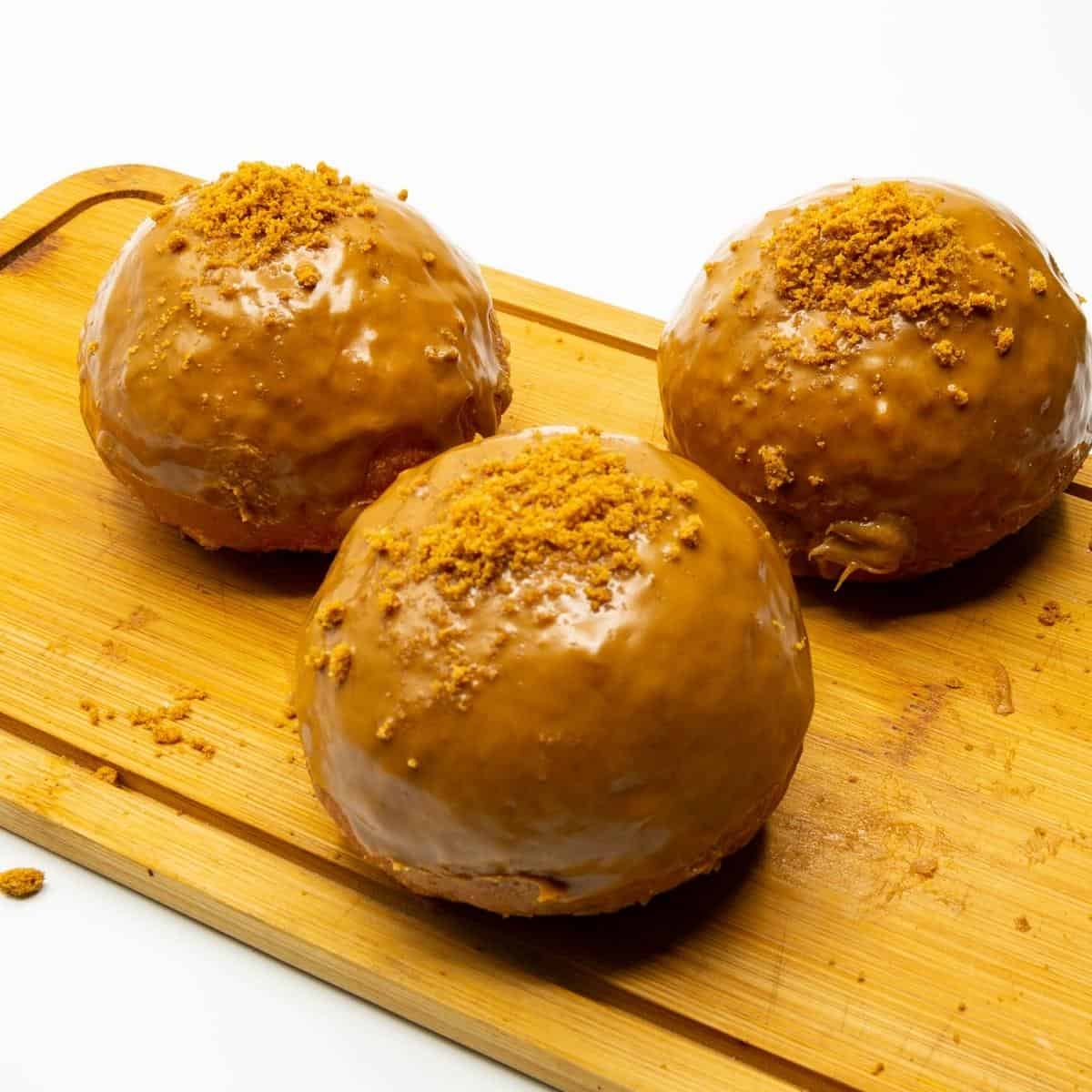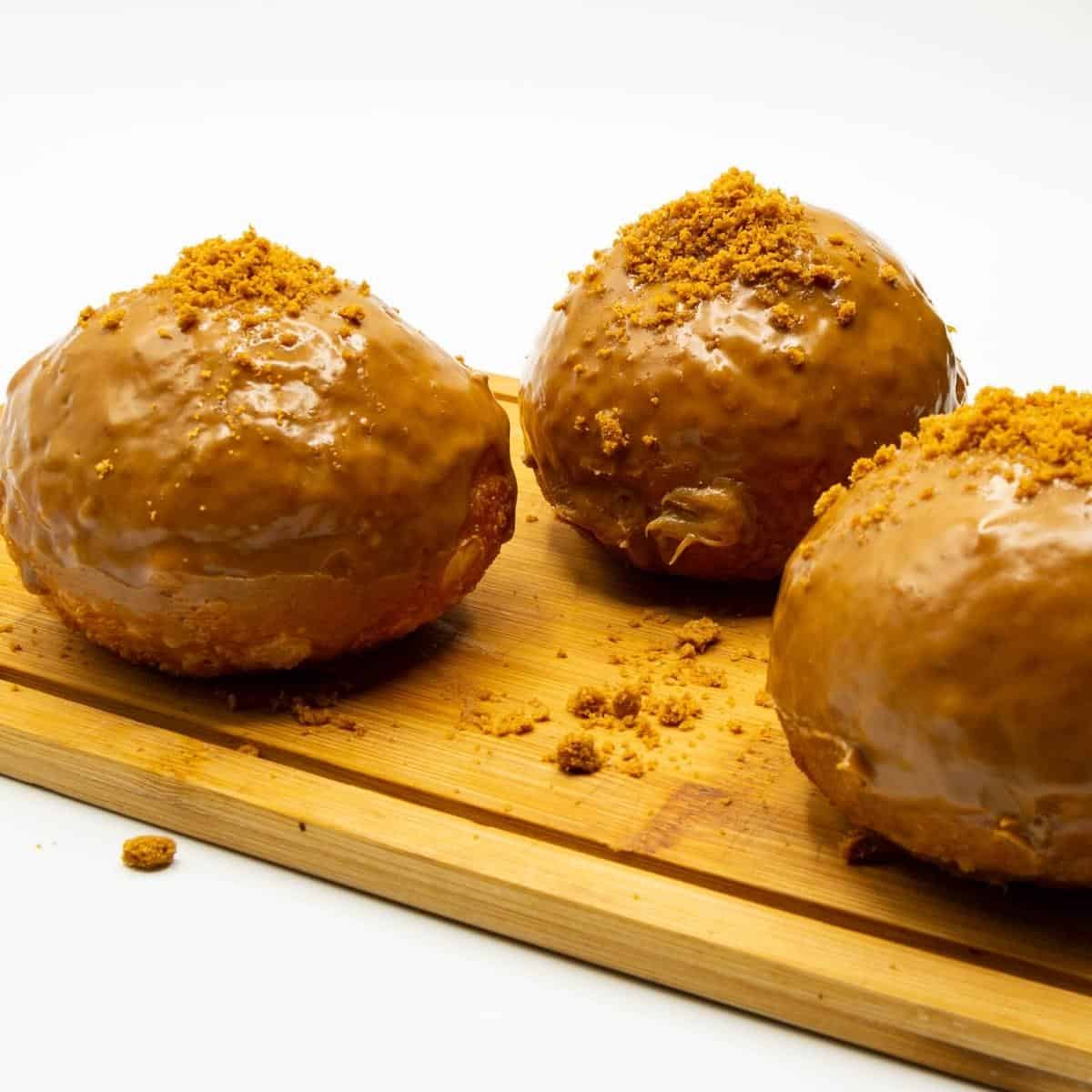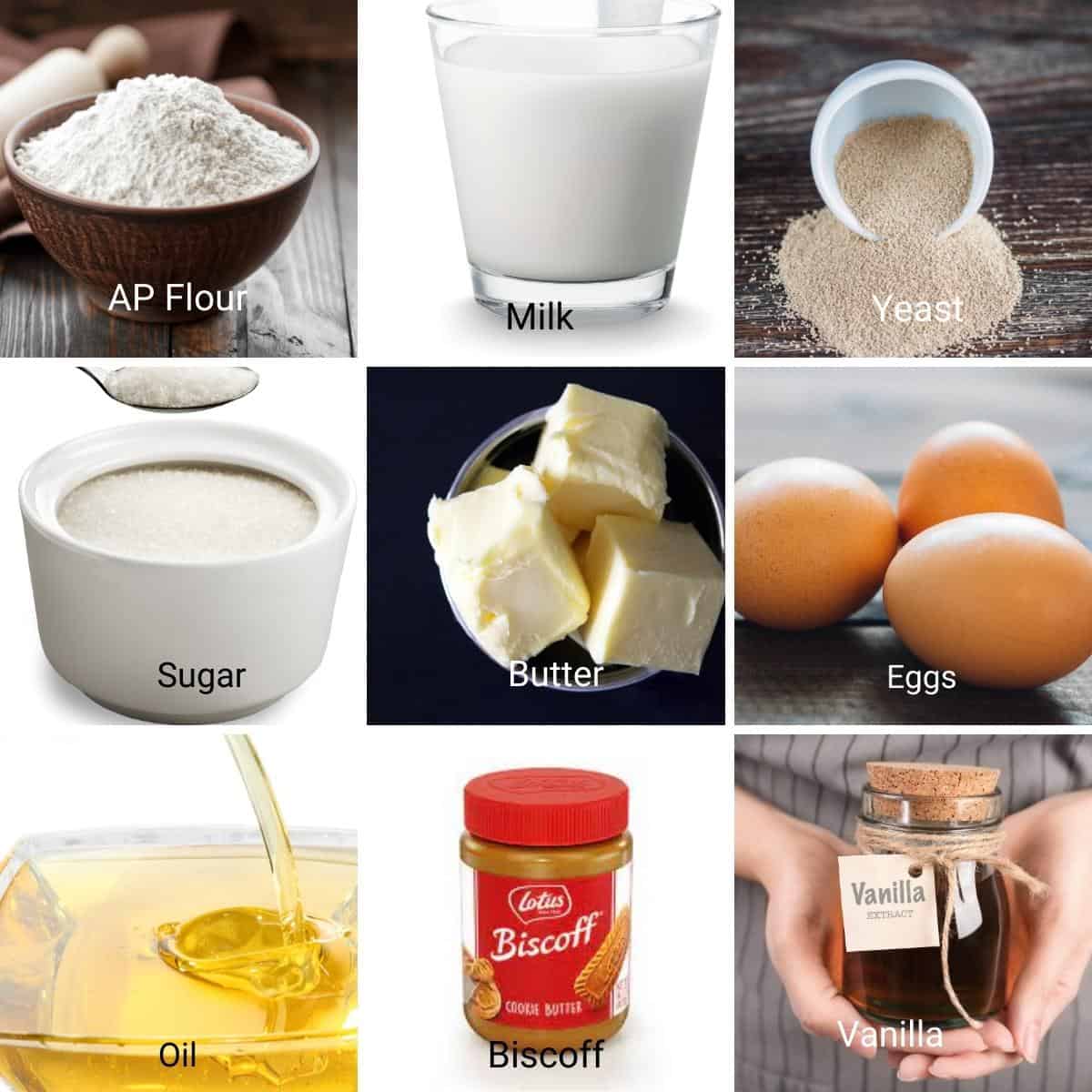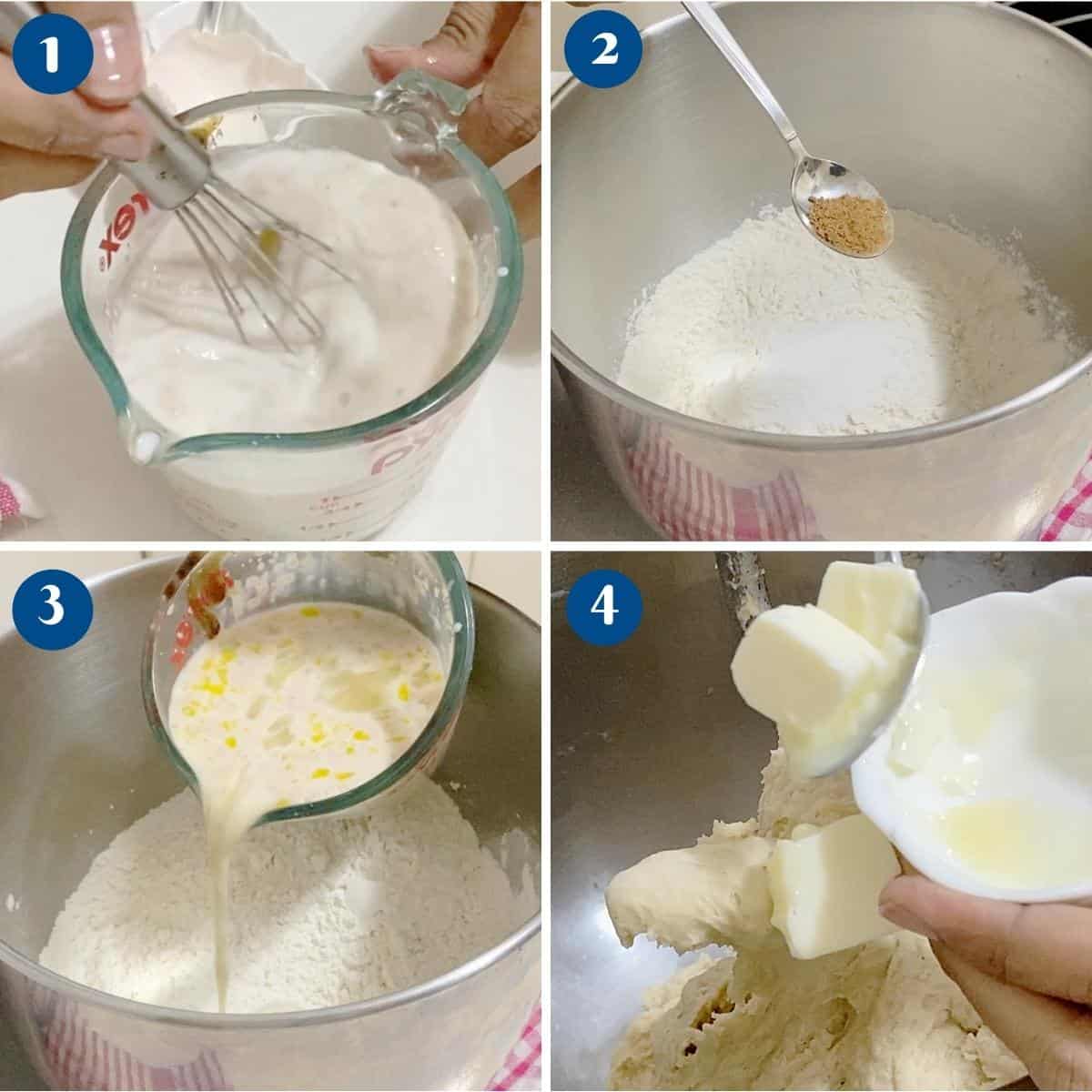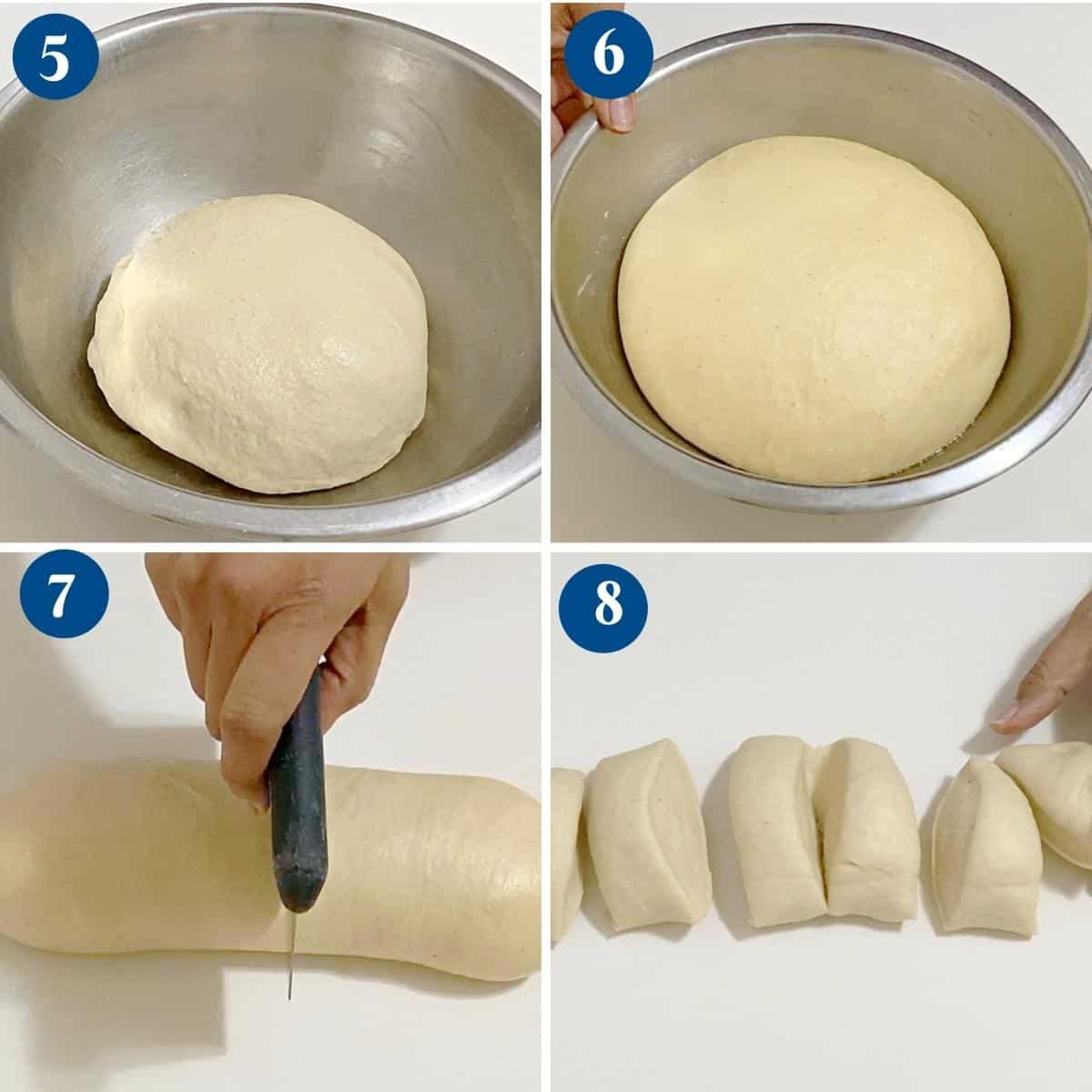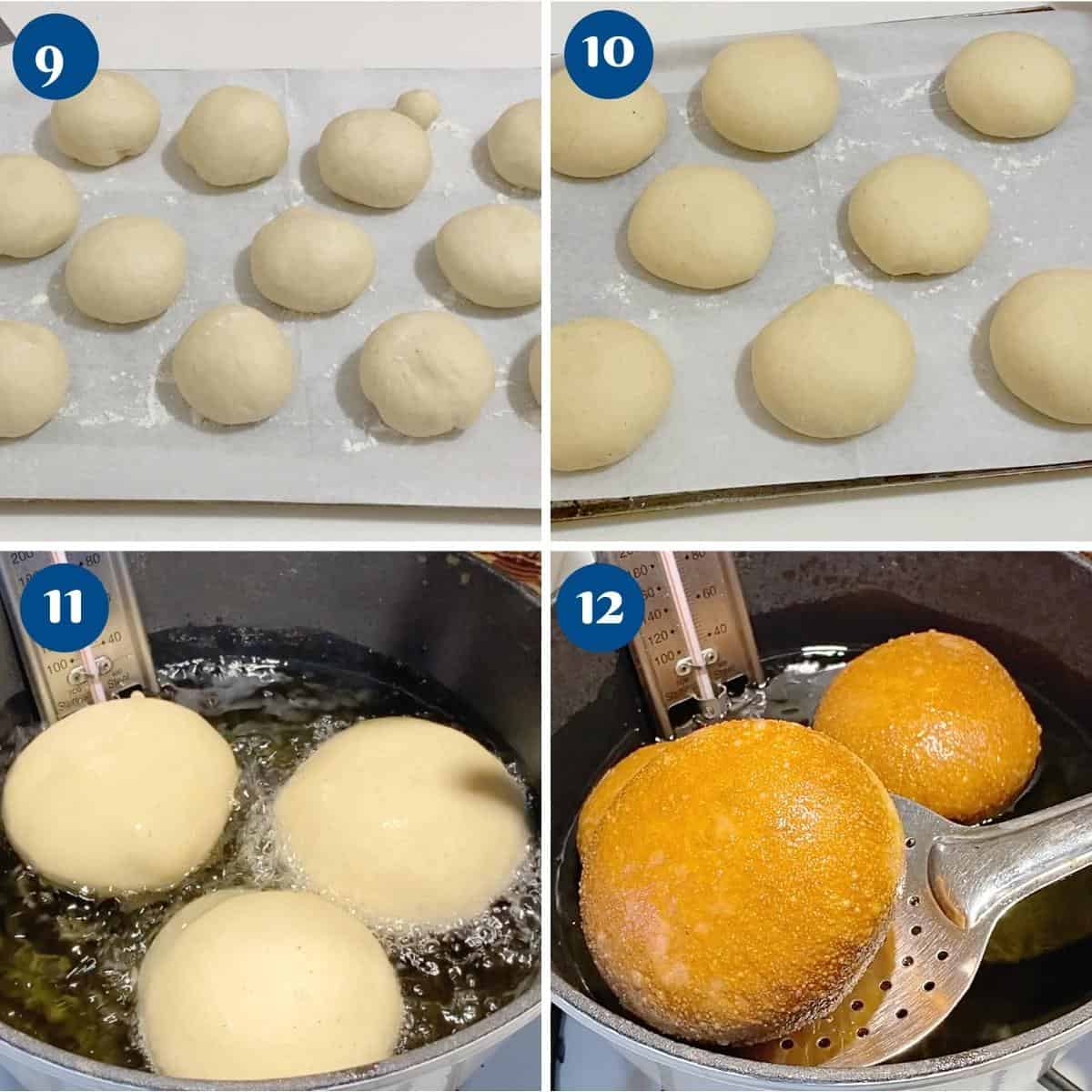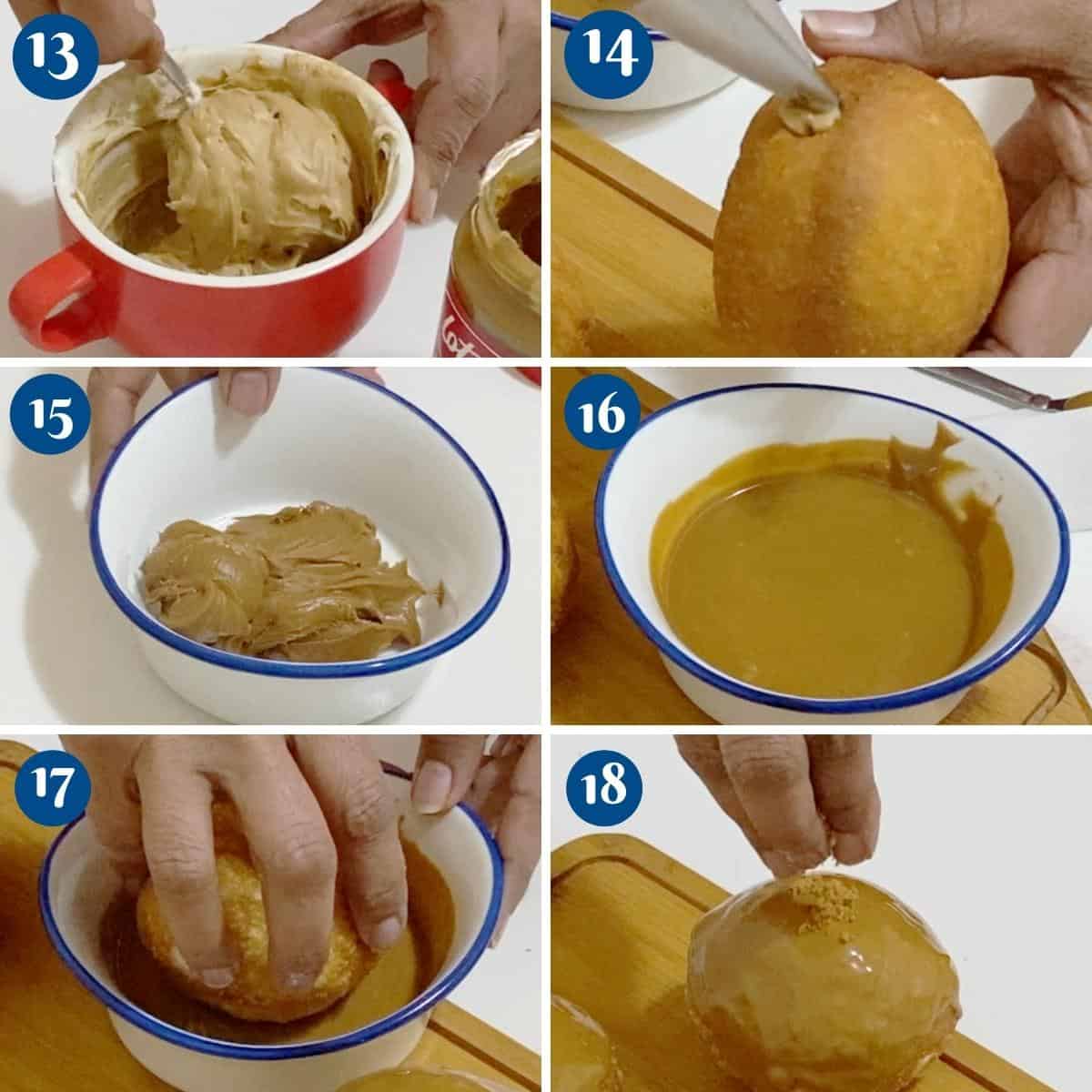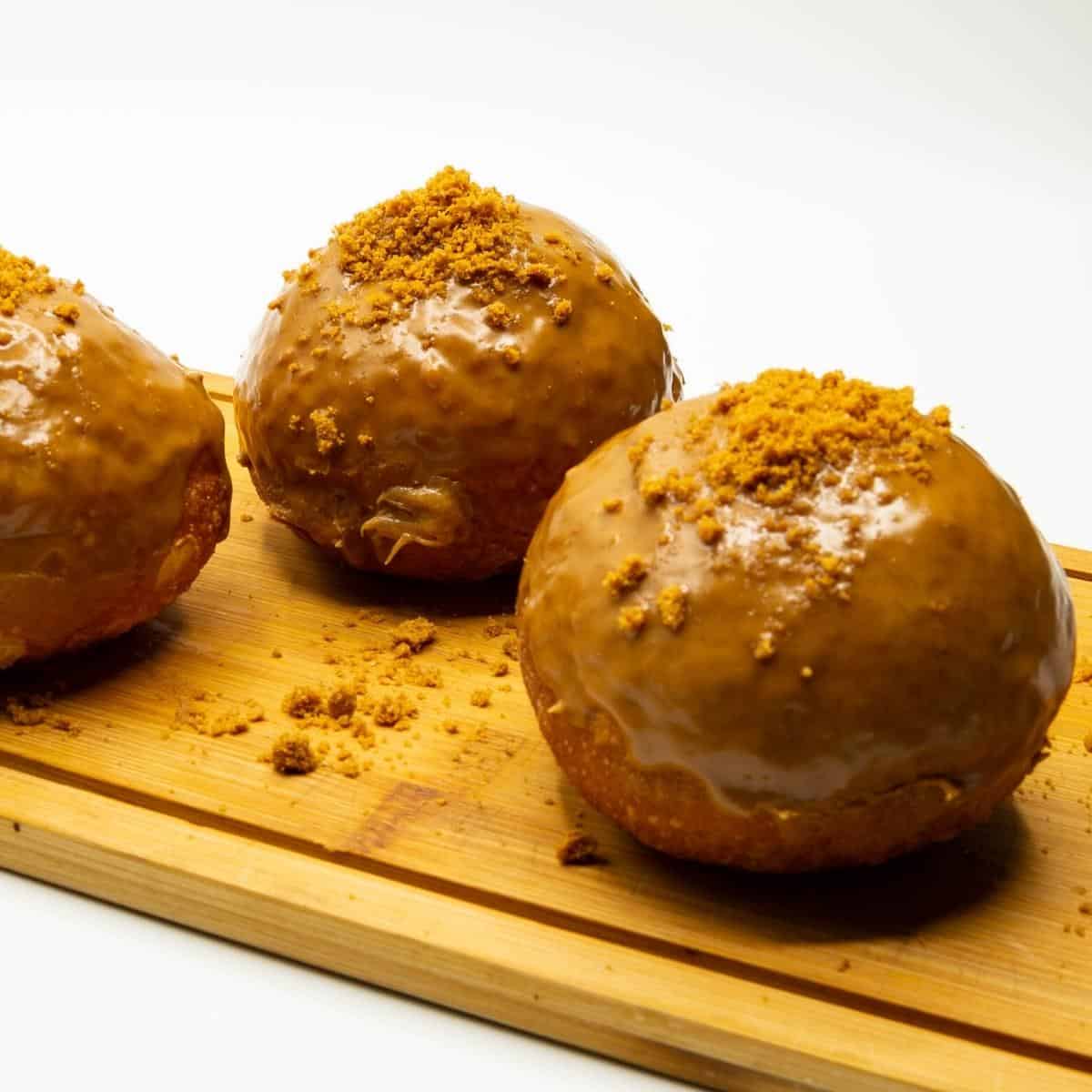A smooth Biscoff doughnut is like eating a hybrid cookie doughnut. And if you’re craving some homemade Biscoff treats, here’s the perfect treat for you. Try these homemade doughnuts and you’ll be surprised how easy they are to make.
How to Make Biscoff Doughnuts
Dough
Dry ingredients – In a bowl, combine flour, salt, and grated nutmeg. Yeast – In a bowl of a stand mixer with the hook attachment, combine warm milk, sugar, yeast, egg, and vanilla. Knead – Add the flour mixture to the yeast mixture and combine on medium-high speed until all the flour is well incorporated making sure to scrape the bottom and sides of the bowl. Then knead for 8 to 10 minutes on medium speed.Pro tip – Avoid adding too much extra flour when kneading. We want a soft, elastic, slightly sticky dough to make soft and fluffy donuts.
Butter – Next, add the butter and continue to knead for 8 to 10 minutes more or until you have a smooth elastic dough.Pro tip – If kneading by hand the dough will take about 20 to 25 minutes to become soft smooth and elastic. You may need about 1/2 cup of flour for dusting your work surface. Bowl – Place the dough in a large greased bowl, cover it with plastic wrap and let rise for 60 to 90 minutes or until double in volume.
Shaping
Divide – Once double in volume – invert on a floured surface. Divide the dough into half and each half into 4 or 6 portions – making 12 small or 8 medium donuts.Pro tip – Always make one or two mini doughnuts for the purpose of testing oil temperature. Shape – Roll each portion into a smooth ball and place it on a baking tray lined with parchment paper dusted with flour to prevent sticking. You can also place them on individual pieces of parchment paper for easy handling.Pro tip – Roll each piece into a smooth ball. Gather the seams and roll between your palms until you have a smooth ball. If the balls are not smooth, your doughnuts will look cracked. Tray – Once all the balls are rolled, flatten them slightly. Cover the baking tray with a clean kitchen cloth or plastic wrap to prevent the donuts from drying.Pro tip – Flattening will ensure you have a doughnut shape when it rises and deep-fries as compared to a ball Proof – You can proof the donuts on the counter for 30 to 45 minutes or place them in the fridge for about 60 to 90 minutes until almost double in volume.Pro tip -The fridge-cold dough is easier to handle but takes longer to proof.
Deep-fry
Oil – Heat vegetable oil in a large pot or deep fryer to about 350 °F to 360 ° F.Pro tip – You don’t want the oil too hot. I like to use a Dutch oven because it keeps the heat even. They need to be cooked inside before they brown on the outside. If the oil is too hot the donuts will get too dark or stay uncooked inside. Test oil – Add a mini doughnut to test the oil. They should rise up in 30 seconds. Once the oil is ready – add two or three doughnuts at a time.Pro tip– You need enough oil so the doughnuts will float, and not touch the bottom of the pot. Deep fry – Cook for 30 seconds on one side then flip and let cook another 30 seconds on the other side. You will need about 3 to 5 minutes for each donut to cook and be beautifully golden brown.Pro tip – Do not crowd the pan as the temperature of the oil will drop/cool down too fast. The doughnuts should rise in about 30 secs as they puff. Remove – Use a slotted spoon to remove them onto a paper towel and let them cool for 20 minutes before you fill and serve.
Fill, glaze and top
Biscoff filling – In a small bowl, combine the cream cheese and Biscoff spread. Then, transfer the spread to a piping bag with a bismark piping tip or similar. Fill about one to two teaspoons of paste in each doughnut.Pro tip – Melt the paste for just 10 to 20 seconds until the paste is smooth piping consistency. Biscoff glaze – In a microwave-safe bowl, melt the Biscoff spread until you have a smooth glaze consistency. Dip each doughnut in the glaze and top with some crushed biscuits.Pro tip – Add the biscoff crumbs when the glaze is still wet so it sticks.
Thank you for sharing - Save for later





